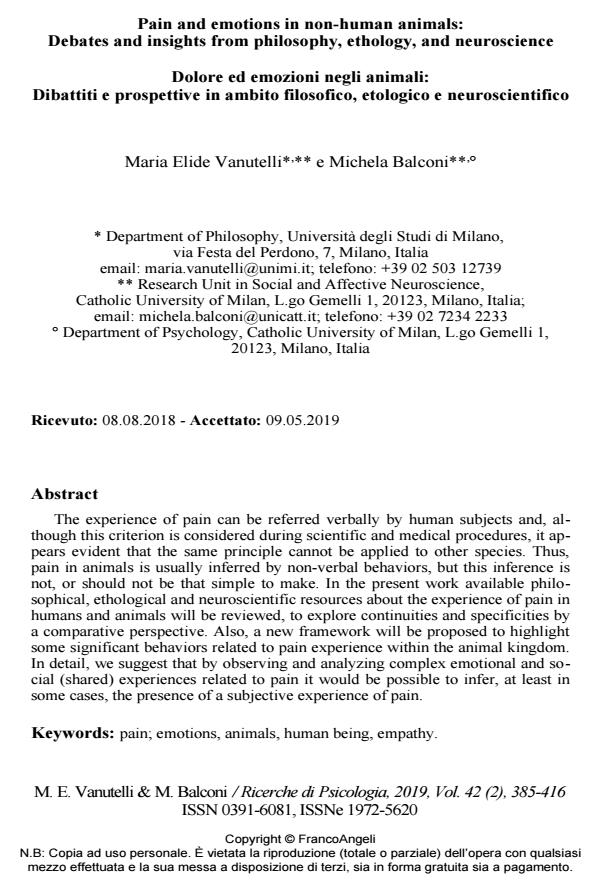Pain and emotions in non-human animals: Debates and insights from philosophy, ethology, and neuroscience
Journal title RICERCHE DI PSICOLOGIA
Author/s Maria Elide Vanutelli, Michela Balconi
Publishing Year 2019 Issue 2019/2
Language English Pages 32 P. 385-416 File size 279 KB
DOI 10.3280/RIP2019-002008
DOI is like a bar code for intellectual property: to have more infomation
click here
Below, you can see the article first page
If you want to buy this article in PDF format, you can do it, following the instructions to buy download credits

FrancoAngeli is member of Publishers International Linking Association, Inc (PILA), a not-for-profit association which run the CrossRef service enabling links to and from online scholarly content.
The experience of pain can be referred verbally by human subjects and, although this criterion is considered during scientific and medical procedures, it appears evident that the same principle cannot be applied to other species. Thus, pain in animals is usually inferred by non-verbal behaviors, but this inference is not, or should not be that simple to make. In the present work available philosophical, ethological and neuroscientific resources about the experience of pain in humans and animals will be reviewed, to explore continuities and specificities by a comparative perspective. Also, a new framework will be proposed to highlight some significant behaviors related to pain experience within the animal kingdom. In detail, we suggest that by observing and analyzing complex emotional and social (shared) experiences related to pain it would be possible to infer, at least in some cases, the presence of a subjective experience of pain.
Keywords: Pain; emotions, animals, human being, empathy.
Maria Elide Vanutelli, Michela Balconi, Pain and emotions in non-human animals: Debates and insights from philosophy, ethology, and neuroscience in "RICERCHE DI PSICOLOGIA " 2/2019, pp 385-416, DOI: 10.3280/RIP2019-002008